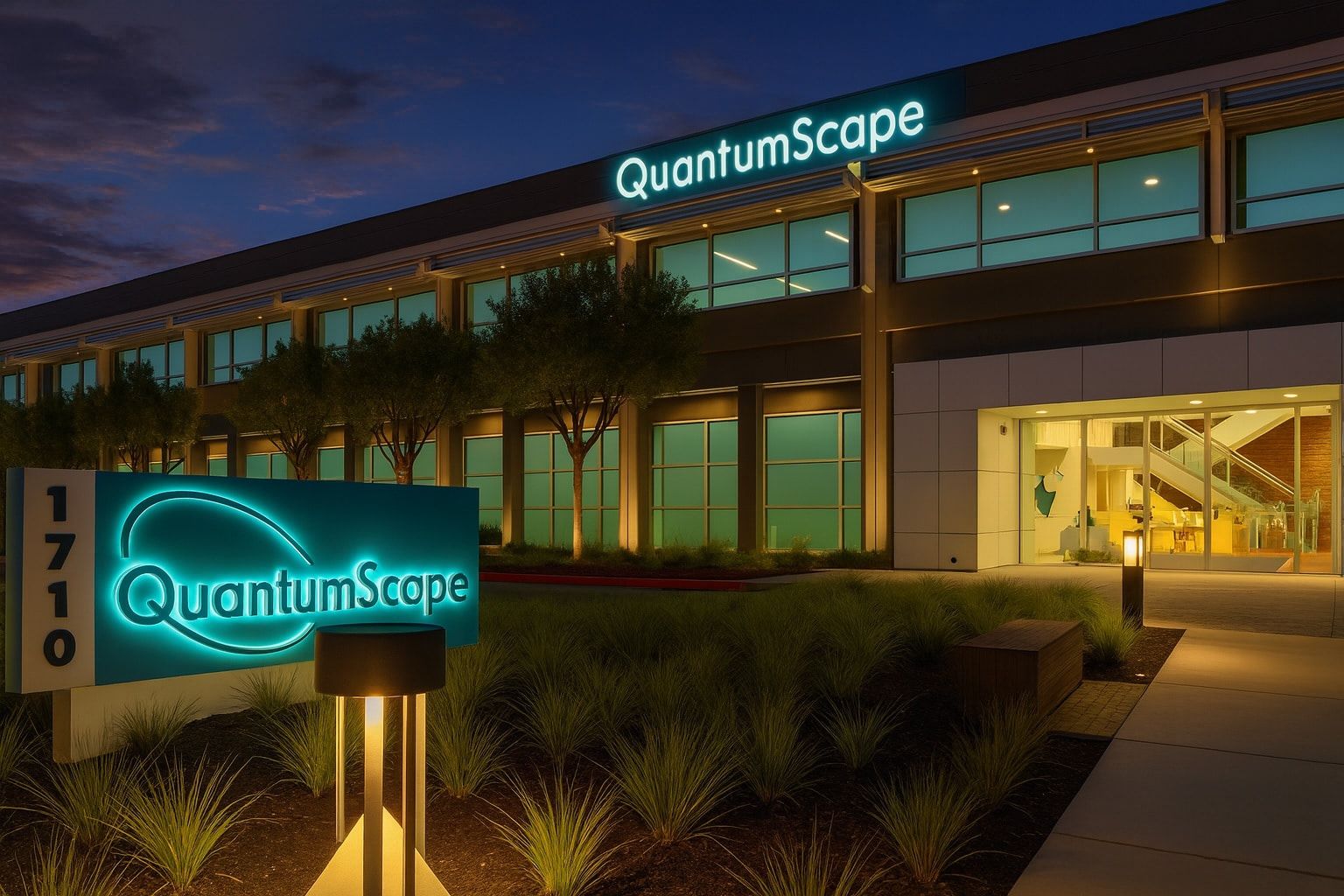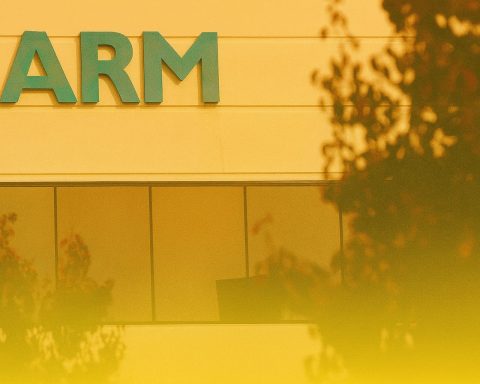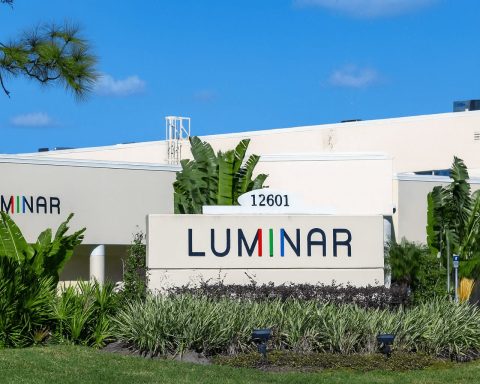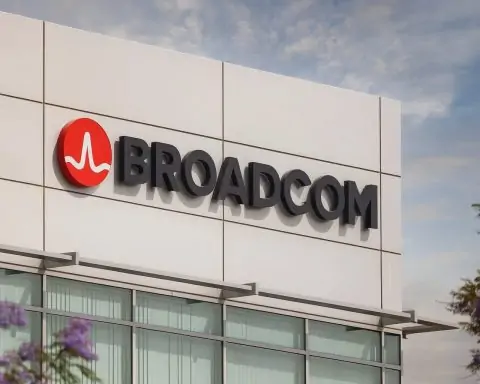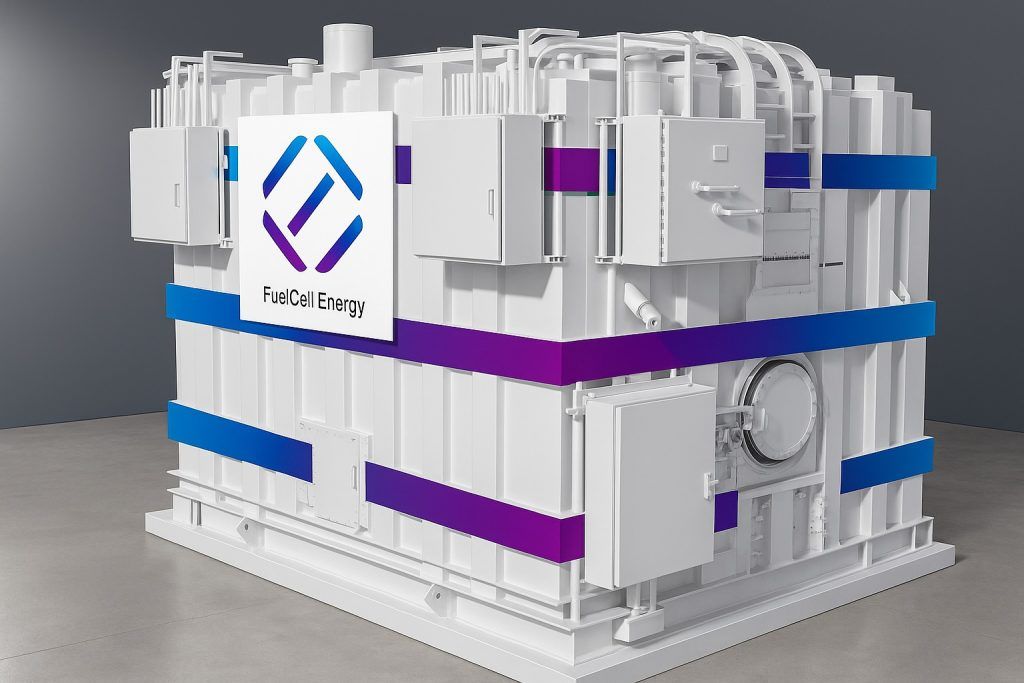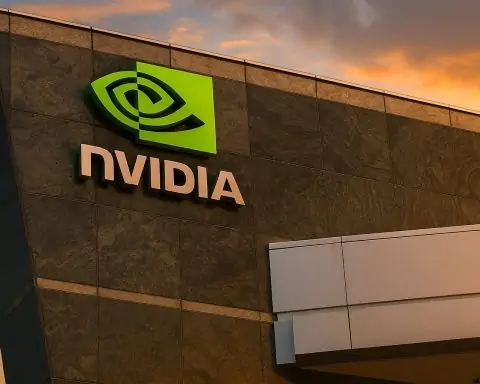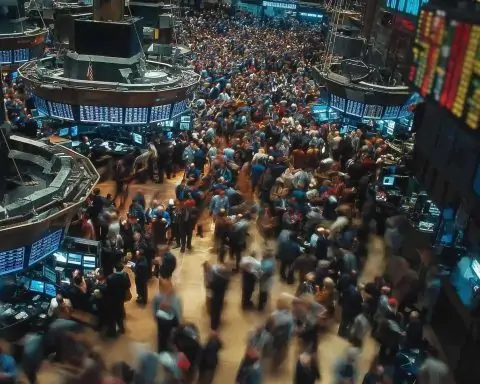Key Facts (as of Oct 31, 2025): QuantumScape’s shares trade around the mid $17 range [1] – up roughly 170–180% year-to-date from near $3–$4 in January [2] [3]. The company, still pre-revenue, reported Q3 2025 EPS of –$0.18 (net loss ~$105.8M) – slightly beating the –$0.20 estimate [4] – and posted $12.8M in “customer billings” (a new metric for invoice activity) [5] [6]. QS ended Q3 with about $1.0 billion in cash and equivalents, extending its cash runway into 2030 [7]. In late Oct QS announced it began shipping “B1” prototype samples of its QSE‑5 solid‑state cells (built with its high-speed Cobra separator) [8] – achieving a key 2025 goal. Major partners include Volkswagen’s PowerCo (now pre-paying ~$260M in royalties) [9], ceramic-material leader Corning (new manufacturing pact), and Murata (separator production). Analysts remain divided: TD Cowen just raised its 12‑month target to $16 (Hold) [10], but the Street’s average target is only ~$7–8 [11], reflecting caution on QS’s high $9B market cap (zero revenue to date). Solid Power (SLDP), a smaller solid-state rival, has also rallied (hitting ~$6.30 in Oct [12]), whereas incumbents like LG Energy Solution and CATL saw only modest moves despite robust Q3 earnings [13] [14].
Stock Performance & Recent Trends
QuantumScape’s stock has been one of 2025’s biggest movers. After languishing in the low-$3 range for much of 2024, QS shares surged starting mid-2025 on positive developments. By mid-October, QS was up ~170–180% year-to-date, briefly touching a 52-week high near $19 [15] [16]. For example, on October 22 (Q3 earnings day) the stock popped ~8.6% after-hours and then jumped another 15% on October 23 as markets digested the results [17]. As of Oct 31, QS trades around the mid-$17 level [18]. This translates to a roughly $9 billion market cap – enormous for a zero-revenue startup.
The rally has been highly volatile: QS has a beta ~4.4, meaning it swings far more than the market [19]. For instance, QS shares briefly flirted with $19 on good news, but pulled back to the mid-$13s before Q3 results as some investors locked in gains [20]. Trading volumes have spiked (tens of millions of shares) with each catalyst. In short, QS has become a “story stock”: wild swings on every announcement. (By comparison, Solid Power’s stock roughly doubled from ~$3.2 in early summer to ~$6.3 by Oct 7, 2025 [21]. LG Energy Solution (KRX:373220), a legacy battery maker, saw only a ~1–2% bump on strong Q3 results [22].)
Recent News & Developments (Oct. 2025)
Q3 Earnings (Oct 22, 2025): QS reported third-quarter results after the close on Oct 22, 2025. The GAAP net loss was $105.8 million (–$0.18 per share) on roughly $115M of operating expense [23], slightly better than the –$0.20 expected. The company again had no product revenue, but highlighted $12.8M in customer billings – its first-ever invoiced receipts from partners [24] [25]. Management raised full-year adjusted-EBITDA loss guidance to $245–260M (from $270M prior) and trimmed capex guidance to $30–40M [26]. The Q3 update emphasized the company’s new capital-light model: QS has been leveraging partner deals and ATM stock raises (about $263.5M in 2025 so far [27]) rather than building huge factories.
Press Releases: On Oct 22, QS also announced it had started shipping “B1” prototype samples of its QSE‑5 solid-state battery cell [28], meeting a major roadmap goal. These cells use the Cobra ceramic separator (discussed below) and are the most advanced cells QS has produced. Separately, in late October QS management participated in industry conferences (with VW and others) reiterating plans for low-volume production by 2026. (In mid-Oct, QS filed with regulators that key insiders sold ~$30M of stock, reflecting some profit-taking amid the rally.)
Notable Catalysts: Earlier in Q3, on Sep 30 QS announced a collaboration with Corning Inc. to co‑develop ceramic separator manufacturing [29] – a partnership hailed by analysts as a “vote of confidence” in QS’s technology. Also in early Sep, QS unveiled at the IAA Mobility show in Munich a Ducati V21L race motorcycle powered by its cells. That real-world demo achieved ~844 Wh/L energy density and charged from 10%–80% in ~12 minutes [30] – highlighting the promise of fast-charging, high-capacity solid-state batteries. Those announcements fueled QS’s Oct rally (the stock jumped 14% the week after the Ducati reveal [31]).
Solid-State Battery Technology Milestones
QuantumScape’s core technology is a lithium-metal solid-state cell (QSE-5 platform). Key innovations in 2025 include:
- Cobra Separator Process: QS has developed a new thin ceramic separator (“Cobra process”) that is 25× faster to produce and much more compact than its prior method [32]. Cobra-based QSE-5 cells are now in pilot production (so-called “baseline” production [33]).
- Prototype Deliveries: In Q3 QS built and shipped B1 engineering samples of its QSE-5 cells to partners [34]. These cells combine the latest QSE-5 chemistry with Cobra separators. QS says this is a “major step toward high-volume commercial production” [35]. The company is also installing a pilot production line (“Eagle Line”) at its San Jose plant [36] to further increase output and automation.
- Real-World Demos: Beyond the Ducati motorcycle, QS is preparing low-volume vehicle trials. It plans to send prototype cells to OEMs in 2026 for integration into test vehicles (building on its VW/PowerCo and Ducati programs). Achieving automotive-grade performance and reliability by 2026–27 is the company’s stated goal [37] [38].
If successful, QS’s lithium-metal design promises faster charging and higher energy density than current Li-ion batteries [39] [40]. That potential “game-changing” advantage (longer EV range, 10+ minute charges, and inherent safety without flammable liquid) underpins investor excitement. However, solid-state batteries are notoriously difficult to scale, and QS must prove this tech in manufacturing and vehicles – a point analysts frequently caution on.
Financial Update: Earnings, Funding & Cash Burn
QuantumScape remains pre-revenue, so its quarterly reports mostly show research spending and financing. Key financials from 2025:
- Earnings (Q3 2025): GAAP operating expenses were $115.0M, yielding a net loss of $105.8M (or –$0.18/share) [41]. The adjusted EBITDA loss was about $61.4M – in line with QS’s expectations.
- Cash & Funding: QS finished Q3 with roughly $1.0B in liquidity (cash, equivalents, marketable securities) [42]. This was bolstered by an at-the-market stock offering (~$263M raised) [43] and partner payments. QS notes that, with current burn rates and milestone funding, it now projects cash runway “through the end of the decade” (i.e. ~2030) [44] – about one year longer than previous guidance.
- Burn Rate: In Q3, capital expenditures were modest ($9.6M) [45]. Full-year 2025 capex guidance was lowered to $30–40M due to efficiency gains. However, QS’s large R&D burn (~$115M/quarter) continues. Management emphasizes a “capital-light” licensing model – focusing on milestone and royalty payments from partners instead of building massive giga-factories [46] [47].
In summary, QS is still unprofitable but has extended its financial runway via stock sales and strategic funding. Its cash cushion of ~$1B gives it flexibility to advance its technology, but significant additional capital (and/or partner payments) will be needed as development continues into the mid-2020s.
Strategic Partnerships & Production Plans
QuantumScape’s strategy hinges on partnerships to both validate and commercialize its tech:
- Volkswagen / PowerCo: VW’s battery unit PowerCo is QS’s largest backer. VW initially invested in QS years ago and continues to expand the deal. In 2025 VW agreed to up to $131M in new payments (for technical milestones over two years) [48]. Additionally, VW’s PowerCo has prepaid about $260M in future royalties to QS [49]. In exchange, PowerCo secures options to license QS’s tech for multi-gigawatt production. This partnership also includes the aforementioned Ducati EV project.
- Corning & Murata: In late 2025 QS announced a joint development agreement with Corning Inc., a leader in ceramic materials, to co‑develop high-volume production of the ceramic battery separators [50]. Simultaneously, QS extended its collaboration with Murata (another advanced ceramics firm) into the next phase [51]. These deals are seen as validation of QS’s approach and are critical for scaling up manufacturing.
- Automotive OEMs: QS has ongoing joint development agreements with multiple automakers. In Q3 it disclosed a new JDA with one existing customer and said it is in active talks with another “Top-10” global OEM [52]. (VW/PowerCo is one customer; other partners include BMW, Ford and Hyundai in smaller projects.) These OEM agreements can yield design milestones, testing programs and potential future cell orders. QS says it plans low-volume shipments to partners in 2025–26 and pilot-scale integration into vehicles in 2026.
- Production Roadmap: On the manufacturing side, QS is focusing on pilot lines and licensing its processes. The new Eagle Line at its San Jose facility is a semi-automated pilot production line for battery cells [53]. The company intends to gradually scale from lab to pilot to (later) commercial lines, possibly through partnerships or licensing. Management has repeatedly stated a goal to begin commercial production by ~2026–27 [54] [55], though skeptics note any actual EV rollout is likely later.
Market Sentiment & Expert Commentary
Investor sentiment is highly polarized. Bulls point to QS’s technological lead and milestones. One analysis even suggests that if QS’s batteries work as promised, fair value could be near $25 per share [56]. The Ducati demo and Corning deal have been touted as evidence that QS is on track. QS executives emphasize the mission to “revolutionize energy storage” – CEO Dr. Siva Sivaram proclaimed in the Q3 call, “Our objective is clear: … revolutionize energy storage, capitalize on our enormous market opportunity, and create exceptional value for shareholders” [57]. COO Luca Fasoli similarly hailed the B1 shipments as “another critical step toward achieving our goal of revolutionizing energy storage” [58].
Bears, however, warn that QS is still years away from selling batteries and must overcome huge technical risks. Many analysts rate the stock a “Hold” or “Reduce”. For example, TD Cowen recently bumped its price target to $16 (up from $5) but still kept a Hold rating [59]. At least eight analyst firms give QS a Hold and three give a Sell [60]. MarketBeat notes the average 12-month target is only about $7.66 [61]. (By contrast, QS traded around $15–16 on Oct 30 [62].) In essence, many pros view QS’s ~$9B market cap as speculative. Key critiques: No revenue yet, long development timeline, and stiff competition.
Sentiment is also colored by insider actions. Recent filings show QS directors and executives have sold stock worth over $35 million in the last quarter [63], which some investors interpret as a red flag. On the other hand, insiders and major partners (like VW) have continued to invest in milestones, suggesting confidence. Overall, the stock’s huge recent run-up means technical traders and momentum players have piled in, but fundamentals-focused investors remain cautious.
Stock vs. Competitors
Among battery stocks, QuantumScape’s 2025 rally has outpaced its peers. The table below (pricing YTD through Oct 31, 2025) illustrates the contrast:
| Company | Ticker | Approx. Price (Oct 31, 2025) | 2025 YTD Change | Notes |
|---|---|---|---|---|
| QuantumScape | QS (NYSE) | ~$17 [64] | +170% [65] | Solid-state Li-metal (pre-revenue) |
| Solid Power | SLDP (NASDAQ) | ~$6.0 [66] | +≈100% (from ~$3.2 in summer) [67] | Sulfide solid-state batteries |
| LG Energy Solution | 373220.KS (KRX) | ~₩473,000 (≈$360) [68] | +4% (driven by Q3 tax-credit rush) [69] | Major Li-ion battery JV (GM, Tesla) |
| CATL | 300750.SZ (SHE) | ~¥389 (≈$55) [70] | ~0% (range-bound) | World’s largest Li-ion maker |
Compared to QS’s runaway gains, Solid Power (SLDP) has also climbed strongly – shares doubled from summer lows to a new 52‑week high around $6.30 in October [71] – reflecting excitement in the solid-state space. In contrast, LG Energy Solution (LGES) and CATL, the incumbents, saw only modest stock moves. LGES reported a Q3 profit surge (driven by U.S. EV sales before tax credits expired) and its shares rose just ~1.5% on the news [72]. CATL’s stock hovered near flat as it continues to dominate conventional EV battery market.
The competitive landscape is also notable. Analysts point out that if QS’s lithium-metal batteries succeed, giants like Panasonic, LGES and CATL could lose market share [73] [74] – since solid-state could leapfrog today’s Li-ion. For example, a MarketMinute analysis warns that companies “which currently dominate the EV battery market” (including LGES and CATL) “might see their market share erode if solid-state batteries deliver on their promises” [75]. On the other hand, the table stakes are high: LGES and CATL are also investing heavily in next-gen cells and have established manufacturing scale. For now, the stock-market reflects a “winners and losers” bet: QS and SLDP are treated as speculative high-upsides, while incumbents trade like slower-growth industrial names.
Analyst Forecasts & Valuation
Wall Street’s one-year price targets for QS remain well below the current price. As of Oct 2025, TD Cowen’s $16 target is an exception – it suggests roughly flat from here [76] – while the consensus target among ~11 analysts is only about $7–8 [77]. Other recent notes: Robert W. Baird raised its target to $11 (Neutral) in July, and Deutsche Bank sits at $10 (Hold) [78]. (By contrast, some bullish research – including at least one Seeking Alpha writer – has argued QS could be worth $25+ if solid-state delivery is on track.)
Equity analysts cite the usual valuation models. Without any products on market, traditional P/E or DCF doesn’t apply yet. Those who attempt a discounted-cash-flow often emphasize future milestone and royalty revenues. One analysis (pre-surge) put QS’s “intrinsic” DCF value near $17 [79], roughly matching today’s price. Most modelers stress the uncertainty: tiny changes in assumptions (e.g. market share, timing) swing value wildly. In short, the current stock price is priced for perfection – the tens-of-billions of EV-battery market, at razor-thin battery profit margins, years out.
Price targets vary widely: bullish forecasts reach the mid-$20s (assuming smooth development) while bearish outlooks are under $5 (assuming delays). For example, TS2.Tech notes one bull “fair value” near $25 if everything goes right [80], whereas others call QS’s valuation “built on future promise” and caution that “execution risks are high” [81]. Most agree the next milestones (sample delivery, 2026 tests) will be key. As MarketBeat summaries it, QS trades with “large swings on news,” and analysts advise investors to weigh the enormous upside against the very real chance of disappointment [82] [83].
Sources: We have drawn on company releases, earnings transcripts, and recent coverage (e.g. TS2.Tech reports [84] [85], MarketBeat and Investing.com summaries [86] [87], Reuters and financial news [88]) to compile this snapshot. Data are current as of late Oct 2025.
References
1. ts2.tech, 2. ts2.tech, 3. markets.financialcontent.com, 4. s29.q4cdn.com, 5. www.investing.com, 6. s29.q4cdn.com, 7. s29.q4cdn.com, 8. ir.quantumscape.com, 9. ts2.tech, 10. www.marketbeat.com, 11. www.marketbeat.com, 12. markets.financialcontent.com, 13. www.reuters.com, 14. markets.financialcontent.com, 15. ts2.tech, 16. markets.financialcontent.com, 17. markets.financialcontent.com, 18. ts2.tech, 19. ts2.tech, 20. ts2.tech, 21. markets.financialcontent.com, 22. www.reuters.com, 23. s29.q4cdn.com, 24. www.investing.com, 25. s29.q4cdn.com, 26. s29.q4cdn.com, 27. www.investing.com, 28. ir.quantumscape.com, 29. ts2.tech, 30. ts2.tech, 31. ts2.tech, 32. markets.financialcontent.com, 33. ts2.tech, 34. ir.quantumscape.com, 35. ir.quantumscape.com, 36. ir.quantumscape.com, 37. ts2.tech, 38. ts2.tech, 39. ts2.tech, 40. markets.financialcontent.com, 41. s29.q4cdn.com, 42. s29.q4cdn.com, 43. www.investing.com, 44. s29.q4cdn.com, 45. s29.q4cdn.com, 46. ts2.tech, 47. s29.q4cdn.com, 48. ts2.tech, 49. ts2.tech, 50. ts2.tech, 51. s29.q4cdn.com, 52. s29.q4cdn.com, 53. ir.quantumscape.com, 54. ts2.tech, 55. ts2.tech, 56. ts2.tech, 57. www.investing.com, 58. ir.quantumscape.com, 59. www.marketbeat.com, 60. www.marketbeat.com, 61. www.marketbeat.com, 62. www.marketbeat.com, 63. www.marketbeat.com, 64. ts2.tech, 65. ts2.tech, 66. markets.financialcontent.com, 67. markets.financialcontent.com, 68. www.reuters.com, 69. www.reuters.com, 70. finance.yahoo.com, 71. markets.financialcontent.com, 72. www.reuters.com, 73. markets.financialcontent.com, 74. markets.financialcontent.com, 75. markets.financialcontent.com, 76. www.marketbeat.com, 77. www.marketbeat.com, 78. www.marketbeat.com, 79. finance.yahoo.com, 80. ts2.tech, 81. ts2.tech, 82. ts2.tech, 83. www.marketbeat.com, 84. ts2.tech, 85. ts2.tech, 86. www.investing.com, 87. www.marketbeat.com, 88. www.reuters.com
